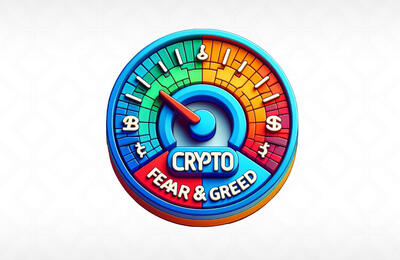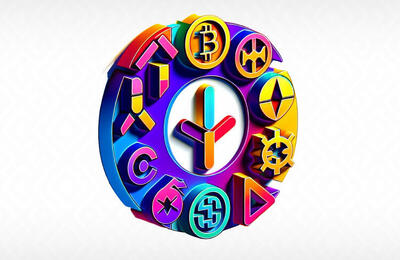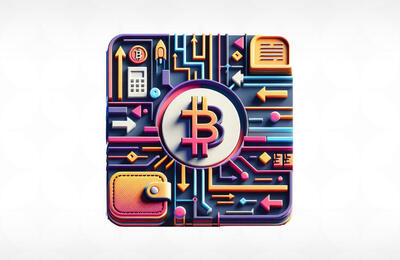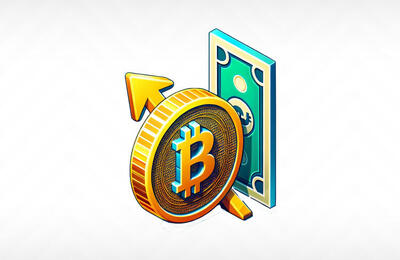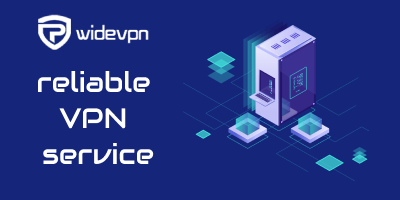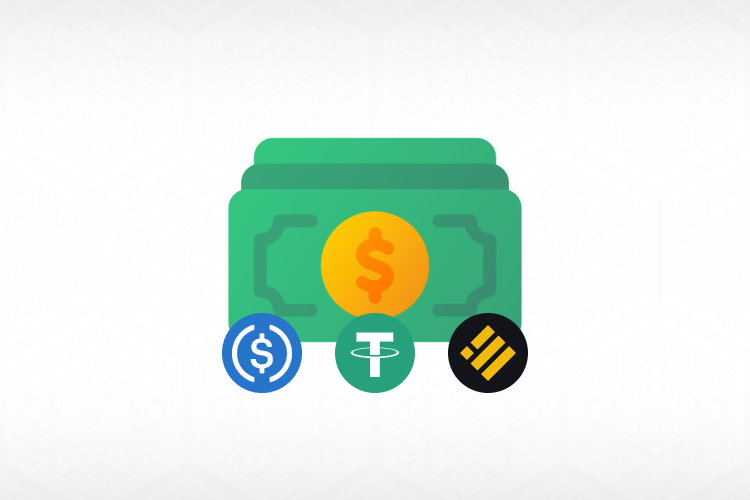
Stablecoins have emerged as a popular alternative to traditional cryptocurrencies, offering a less volatile option for investors seeking stability in the world of digital assets. But are they worth investing in?
In this article, we will explore the concept of stablecoins, their benefits and potential drawbacks, and ultimately help you decide if they are a suitable investment option for you
What are Stablecoins
Stablecoins are cryptocurrencies that are pegged to a stable asset. The value of stablecoins is supposed to remain constant, even during times of volatility in the cryptocurrency market. This makes them ideal for use in financial products like loans, savings accounts and derivatives trading, as well as other applications where stability is important.
USDT, or Tether, is a popular example of a stablecoin. The concept behind USDT is that every token is backed by one U.S. Dollar, maintaining a 1-to-1 ratio between USDT and USD.
Stablecoins can be backed by the value of real assets such as gold or fiat currencies (like USD). However most stablecoins don't actually hold these assets directly. Instead they rely on complex algorithms which aim to keep their price at parity with an underlying asset without actually owning anything themselves.
These stablecoins are often used in trading pairs on cryptocurrency exchanges, allowing traders to easily switch between different cryptocurrencies without converting back to fiat currency. The USDT USDC trading pair, specifically, allows traders to exchange between these two stablecoins, both of which are pegged to the U.S. dollar.
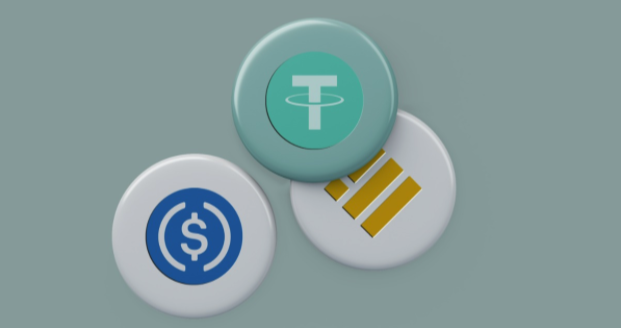
Importance of Stablecoins
Stablecoins play a vital role in the cryptocurrency ecosystem and have several important functions that make them valuable for both investors and users. Some of the key reasons why stablecoins are important include:
Reduced volatility: Stablecoins are designed to maintain a stable value, typically by pegging them to a stable asset such as fiat currency or a commodity. This reduces the price volatility often associated with traditional cryptocurrencies, making stablecoins more suitable for everyday transactions and as a store of value.
Easier adoption for everyday use: Due to their reduced volatility, stablecoins can be more easily adopted for everyday use, such as making payments or transferring funds. This can help bridge the gap between traditional finance and digital assets, making it easier for individuals and businesses to embrace and utilize cryptocurrencies.
Hedging against cryptocurrency market fluctuations: Stablecoins can serve as a safe haven for cryptocurrency investors during periods of high market volatility. By converting their more volatile cryptocurrency holdings into stablecoins, investors can protect their assets from significant price drops and maintain their value.
Cost-effective and fast cross-border transactions: Stablecoins can facilitate cost-effective and fast cross-border transactions, as they are not subject to the same fees and delays associated with traditional banking systems. This can be particularly beneficial for remittances and international business transactions.
Financial inclusion: Stablecoins can help promote financial inclusion by providing access to digital financial services for unbanked or underbanked populations. By offering a stable and easily accessible digital currency, stablecoins can enable individuals to participate in the global economy without relying on traditional banking systems.
Fostering the growth of decentralized finance (DeFi): Stablecoins play a critical role in the growth of the DeFi ecosystem. They are used as collateral for loans, as a medium of exchange in decentralized exchanges, and as a means to earn passive income through staking or yield farming. By providing stability and liquidity, stablecoins help facilitate the development of various DeFi applications and platforms.
Why Stablecoins is a Good Investment
Stablecoins are a great way to store value in a volatile market. They can also help you hedge against volatility and trade on the crypto market.
They Are Pegged On Stable Assets
Stablecoins are pegged to a stable asset, which means they're backed by something that has a stable value. The most common examples of these are gold and fiat currencies (like the US dollar). Unlike traditional cryptocurrencies like Bitcoin, Litecoin and Ethereum that rely on algorithms for their value, stablecoins are backed by the government or some other authority.
This means that their value is less likely to experience the wild fluctuations often seen with traditional cryptocurrencies like Bitcoin or Ethereum.
They Are a Good Source of Passive Income
Another reason why stablecoins can be an attractive investment option is their potential to generate passive income. This can be achieved through various methods, such as lending, staking, and yield farming, which can provide investors with a steady stream of income without having to actively manage their investments.
Stablecoins can be a good source of passive income for investors through various methods like lending, staking, and yield farming. These strategies can provide a steady stream of income while still maintaining the stability and security of holding a digital asset pegged to a stable asset.
They Are a Store of Value
Stablecoins are a great place to store your money when you're looking for a safe haven. Stablecoins can help you hedge against inflation and other economic uncertainties, which is especially important during a recession or financial crisis.
Stablecoins also allow crypto investors to store their holdings in something more stable than volatile cryptocurrencies like Bitcoin and Ethereum. This gives them peace of mind when it comes time to invest in digital currency--and it offers an additional layer of protection from market crashes or corrections.
Reduced Volatility
The primary benefit of this reduced volatility is that it makes stablecoins a more attractive option for investors looking for a digital asset without the inherent risks associated with the unpredictable price swings of other cryptocurrencies. This stability can be particularly appealing to those who are new to the world of digital assets and may be hesitant to invest in more volatile options.
Easier Adoption for Everyday Use
Another advantage of stablecoins being pegged to stable assets is that they can be more easily adopted for everyday use. Because their value is less likely to change dramatically in a short period, stablecoins can be used for transactions and payments without the worry of sudden price changes affecting the transaction's value. This can help bridge the gap between traditional finance and digital assets, making it easier for individuals and businesses to embrace and utilize cryptocurrencies.
Lower Risk of Loss
Investing in stablecoins can also provide a lower risk of loss compared to other cryptocurrencies. Since their value is pegged to a stable asset, the chances of a stablecoin's value plummeting to zero are significantly lower than with more volatile cryptocurrencies. This can make stablecoins a suitable option for more risk-averse investors or those looking to diversify their portfolio with a less volatile digital asset.
They Are Not Fully Decentralized
Stablecoins are not fully decentralized. Unlike other cryptocurrencies, they are more centralized, and they do not have the same level of transparency.
Stablecoins must be backed by fiat currencies in order to function as a stable store of value that can be used as a medium of exchange. However, unlike other cryptocurrencies that have been around for years (bitcoin) or decades (litecoin), there is no guarantee that these backing assets will be available when needed. In fact, there have been instances where stablecoins have become insolvent because their issuers lack sufficient funds to support them.
They Are Not Regulated
While stablecoins do offer several benefits, it is essential to also consider the potential drawbacks. One such drawback is the lack of regulation surrounding stablecoins. Although this can be seen as an advantage in some cases, it also comes with its risks and challenges.
The lack of regulation around stablecoins can be seen as a positive for some investors, as it allows for increased flexibility and privacy compared to traditional financial systems. Transactions can be made quickly and without the need for intermediaries, such as banks, which can result in lower fees and faster transaction times.
Risks of Investing in Stablecoins
Investing in stablecoins comes with several risks that potential investors should be aware of before making a decision. Some of these risks include:
Counterparty risk: The probability that the other party in the asset may not fulfill part of the deal and default on the contractual obligation. This risk is particularly relevant when investing in stablecoins that are backed by assets held by a third party.
Regulatory risk: As mentioned earlier, stablecoins are not yet fully regulated, which can lead to potential legal issues or even the shutdown of a project. Governments and regulatory bodies are still developing and enforcing regulations around digital assets, and stablecoin projects may face difficulties in complying with these new rules.
Stability and transparency concerns: Some stablecoins may not have sufficient collateral to maintain their peg, or there may be questions about the accuracy of their reported reserves. This can undermine the stability of the stablecoin and potentially lead to a loss of value for investors.
Fraud, scams, and malicious activities: The lack of regulation can result in a higher risk of fraud, scams, or other malicious activities. Investors must be cautious and conduct thorough research before investing in any stablecoin project to ensure its legitimacy and security.
Conclusion
With all the risks and benefits, it's clear that stablecoins are a new type of investment. They're not quite like most cryptocurrencies, nor are they as stable as traditional currencies like dollars or euros. They're somewhere in between--and that makes them hard to understand! But if you want to invest in this market (and maybe even make some money), then these coins might be worth considering.


